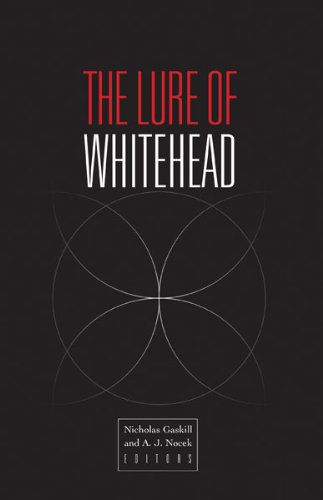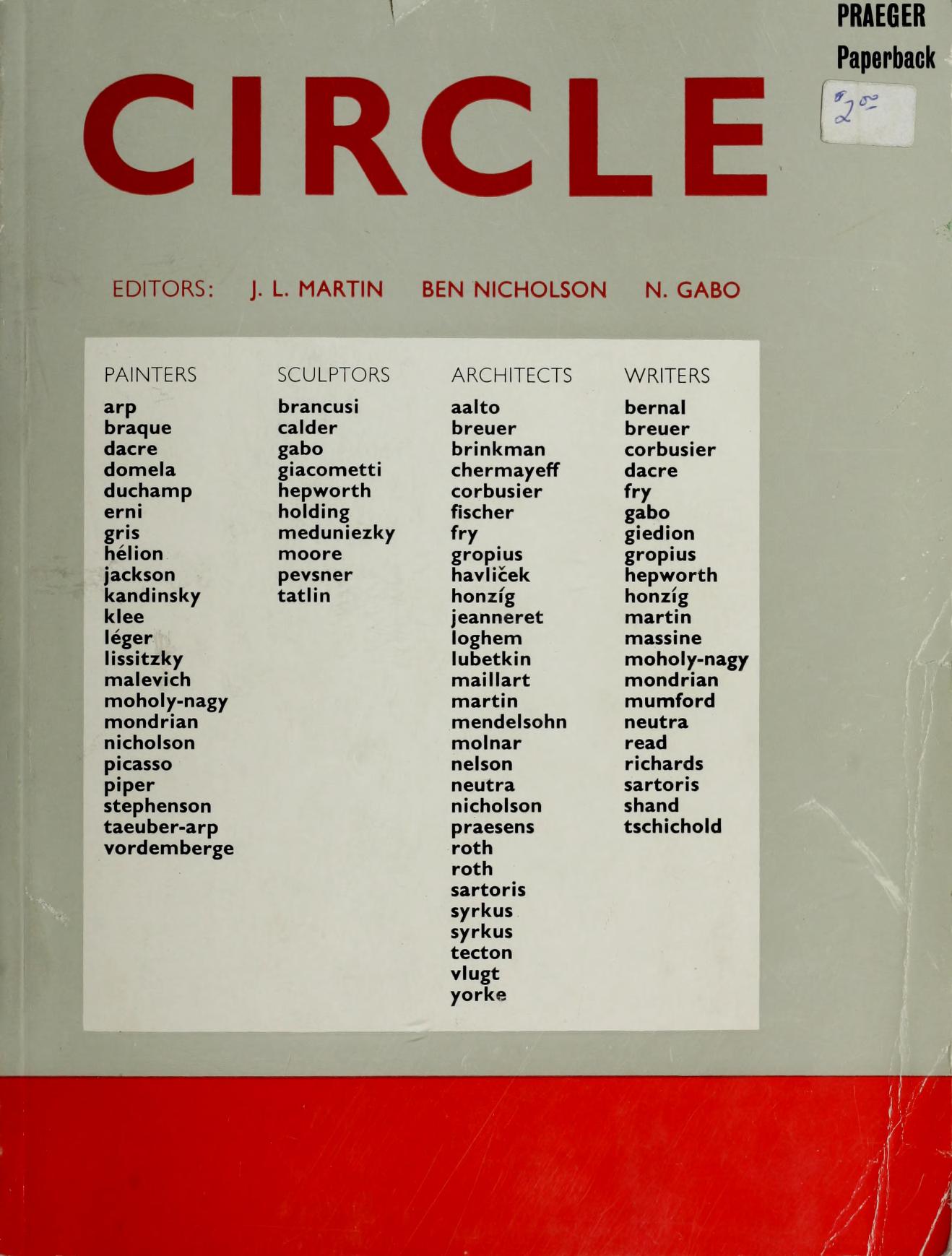Leslie Martin, Ben Nicholson, Naum Gabo (eds.): Circle: International Survey of Constructive Art (1937/1971)
Filed under book | Tags: · abstract art, abstraction, architecture, art, art criticism, art history, art theory, avant-garde, constructivism, painting, sculpture
This book contains work and writings by virtually all the leading architects and artists of the international constructivism of the 1930s.
First published in London, 1937.
Reprinted by Praeger Publishers, New York, 1971
viii+291 pages
in the Unlimited Edition
PDF (58 MB, no OCR)
Comment (1)Nicholas Gaskill, A. J. Nocek (eds.): The Lure of Whitehead (2014)
Filed under book | Tags: · abstraction, bifurcation, consciousness, constructivism, creativity, difference, ecology, feeling, god, immanence, life, mereotopology, metaphysics, nature, ontology, perception, philosophy, posthuman, science, society, subject, temporality, time, vitalism

“Once largely ignored, the speculative philosophy of Alfred North Whitehead has assumed a new prominence in contemporary theory across the humanities and social sciences. Philosophers and artists, literary critics and social theorists, anthropologists and computer scientists have embraced Whitehead’s thought, extending it through inquiries into the nature of life, the problem of consciousness, and the ontology of objects, as well as into experiments in education and digital media.
The Lure of Whitehead offers readers not only a comprehensive introduction to Whitehead’s philosophy but also a demonstration of how his work advances our emerging understanding of life in the posthuman epoch.”
Contributors: Jeffrey A. Bell, Nathan Brown, Peter Canning, Didier Debaise, Roland Faber, Michael Halewood, Graham Harman, Bruno Latour, Erin Manning, Steven Meyer, Luciana Parisi, Keith Robinson, Isabelle Stengers, James Williams.
Publisher University of Minnesota Press, 2014
ISBN 9780816679959
ix+427 pages
Review: Ronny Desmet (Constructivist Foundations, 2015).
PDF (updated on 2021-3-9)
Comment (0)Stamatia Portanova: Moving without a Body: Digital Philosophy and Choreographic Thoughts (2013)
Filed under book | Tags: · abstraction, aesthetics, affect, algorithm, body, choreography, code, composition, computation, computing, dance, digital, geometry, image, infinity, mathematics, mind, movement, number, object, philosophy, sensation, virtual

“Digital technologies offer the possibility of capturing, storing, and manipulating movement, abstracting it from the body and transforming it into numerical information. In Moving without a Body, Stamatia Portanova considers what really happens when the physicality of movement is translated into a numerical code by a technological system. Drawing on the radical empiricism of Gilles Deleuze and Alfred North Whitehead, she argues that this does not amount to a technical assessment of software’s capacity to record motion but requires a philosophical rethinking of what movement itself is, or can become.
Discussing the development of different audiovisual tools and the shift from analog to digital, she focuses on some choreographic realizations of this evolution, including works by Loie Fuller and Merce Cunningham. Throughout, Portanova considers these technologies and dances as ways to think—rather than just perform or perceive—movement. She distinguishes the choreographic thought from the performance: a body performs a movement, and a mind thinks or choreographs a dance. Similarly, she sees the move from analog to digital as a shift in conception rather than simply in technical realization. Analyzing choreographic technologies for their capacity to redesign the way movement is thought, Moving without a Body offers an ambitiously conceived reflection on the ontological implications of the encounter between movement and technological systems.”
Publisher MIT Press, 2013
Technologies of Lived Abstraction series
ISBN 0262018926, 9780262018920
200 pages
Reviews: Donnarumma (Mute, 2014), Murphy (Afterimage, 2014), Thain (Digicult).
PDF (11 MB)
Comment (0)

